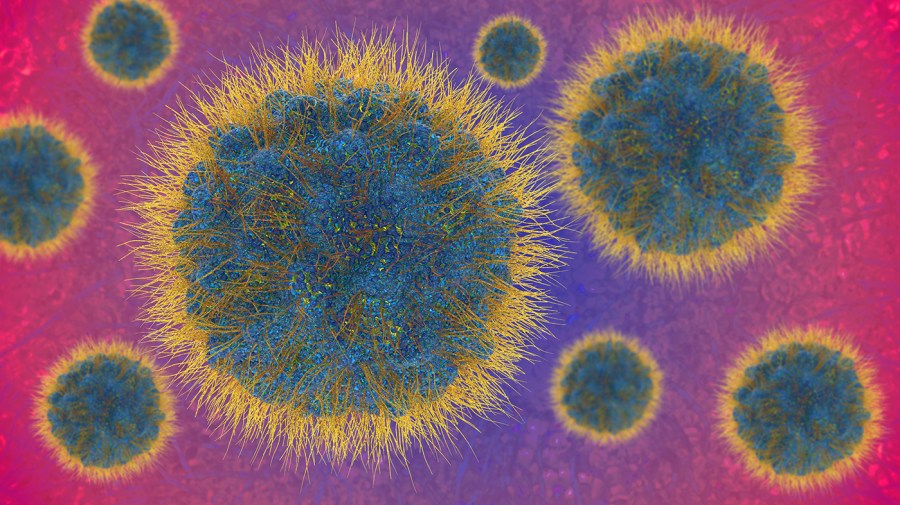More than two years after the mpox outbreak in the U.S. was declared over, a new crop of cases in California has infectious disease experts on edge.
The mpox outbreak that spread through men who have sex with men was declared over at the start of 2023, though low-level transmission has persisted since then.
A collection of three unrelated mpox cases recently detected in California is raising concerns, as they were caused by a more infectious, more dangerous strain of the virus called clade I mpox.
The strain that affected the U.S. during the 2022 outbreak was from clade II, which has a relatively low mortality rate. Of the more than 32,000 cases that were recorded during the public health emergency for the 2022 U.S. outbreak, 58 deaths were confirmed, marking a mortality rate of 0.2 percent.
While both strains are present in Central Africa, clade I mpox is more likely to cause severe illness and historically has a higher mortality rate and higher transmissibility.
All three of the cases in California required hospitalization. According to the California Department of Public Health (CDPH), these cases indicate that, like the outbreak in 2022, the virus is spreading through the communities of men who have sex with men.
Joseph Cherabie, a member of the HIV Medicine Association board of directors and assistant professor of infectious diseases at Washington University St. Louis, said it was “only a matter of time” before clade I mpox was detected in the U.S.
He noted that clade I mpox was previously detected in California in the past, but that case was associated with an individual who had recently traveled to Africa. These individuals, as far as officials know, have not traveled recently.
“That makes us a little bit uncomfortable as epidemiologists and as public health folks, because that means that there’s community spread of clade I that we are not necessarily detecting and don’t have the full capability of detecting,” Cherabie said.
Mpox is primarily spread through close, skin-to-skin contact with an infected individual through the characteristically painful rashes that develop during infections. Given that a vector of transmission hasn’t been identified yet, Cherabie said there’s “definitely more cases” that haven’t been detected yet.
The Hill has reached out to the CDPH for more information regarding the mpox infections.
Despite early concerns, public health officials including the CDPH maintain that the risk to the general public remains low.
Seth Blumberg, professor of medicine at the University of California, San Francisco, told The Hill that one hopeful indication is that the mortality rate so far doesn’t appear to be high, with no deaths yet reported in association with the infections.
Blumberg noted that animal-to-human transmission of clade I mpox is common in Central Africa. Despite the former name of “monkeypox,” small rodents and other mammals are the usual carriers in Africa. If zoonotic infections are occurring in California, Blumberg said it would make containing the virus harder.
With lessons learned from the previous outbreak, Cherabie said casual contact is unlikely to be how the virus spreads.
“If we learned anything from the 2022 outbreak, casual contact, and, you know, transmission through things like clothing, shared clothing, or sitting on the same seat in a subway or anything like that — that did not occur,” Cherabie said. “You need very close, intimate contact with these lesions. So that is why the predominant means of transmission previously was through sexual contact.”
When mpox outbreaks began cropping up in nonendemic countries around the world in 2022, public health officials had to contend with the fact that there were no vaccines or treatments specifically indicated for mpox.
But medicines for smallpox, which mpox is related to, were quickly deployed. These include the Jynneos smallpox vaccine and the antiviral medication tecovirimat or Tpoxx.
These drugs are expected to be effective against clade I mpox, like they are against clade II mpox. Two doses of Jynneos are required for full protection. Tpoxx can be administered intravenously or orally.
Another concern among infectious disease experts is the lack of public health support that can be expected from the federal government should these cases turn out to be a precursor to a more serious situation.
The Centers for Disease Control and Prevention (CDC) has been hit with successive waves of layoffs this year under the Trump administration. That chaos, coupled with the current government shutdown, means the federal government may not be a reliable public health partner at this time.
“Our ability to monitor and test for clade-specific testing, and our ability to communicate with one another, with up-to-date, real-time data has been massively, massively eviscerated by the public health cutbacks from the government,” said Cherabie, noting the staffers in charge of the CDC’s Morbidity and Mortality Weekly Report were recently terminated before being rehired.
“We are not allowed contact with our CDC colleagues right now. We weren’t allowed a lot of contact before, but we’re not allowed contact during the shutdown as well,” he added.
He stressed, however, that California’s own public health system is “robust.”

